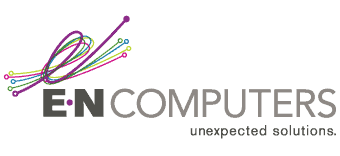

Content Contributor, E-N Computers
7+ years experience in healthcare IT and tech support.
It’s the end of the year, and you’re working hard to finish the budget for the coming year. What stays and what goes? Are you spending too much on IT? Where can you trim some fat?
Healthy business sense says to make sure that your expenses are necessary and provide value for your staff and customers. At the same time, in an uncertain economy, you need to cut costs wherever possible. How can you make sure that your IT budget covers the essentials without being excessive?
QUICK ANSWER:
How can I cut costs with my IT budget?
Remember that the purpose of IT is to control costs through automation. Avoid customized solutions that must be maintained by highly skilled professionals. Get the professional opinions of industry and IT experts on areas where you can improve your processes and technology stack. And most importantly, develop an IT strategy that supports your goals.
Why Do We Have IT?
To strike the right balance in your IT budget, it’s best to ask, “Why do we have IT?” Often, when we view IT as a cost center, it’s because we’ve lost sight of its purpose and the value it provides to the business. IT systems exist to control costs through automation and elimination of tedious tasks. To achieve that, we must be careful about adding unsupported systems and manual processes that duplicate existing functionality or add complexity.
Unnecessary IT Costs

- IT staffing
- Complex solutions
- Cloud software
IT Staffing
Small companies that rely on one IT person in their early days naturally add IT staff as the company grows and can no longer be supported by one technician. However, building a functional IT department in the modern technology landscape requires a variety of skills that are unaffordable for most small businesses to employ full-time.
Your first IT person, often called a systems administrator or IT manager, is a jack of all trades and their salary starts around $65,000. They’re responsible for end-user support, sourcing hardware and software, managing servers and network equipment, applying updates, and maintaining the overall security and reliability of your network. As the company grows, the day-to-day tasks of user support and basic maintenance start to crowd out important planning and projects. They will need support if they are going to do everything that keeps your business network running smoothly, and you will need support when they take time away.
At this point, you may think about hiring a second person: either a second systems administrator or a user support technician. User support technicians have an average salary of $45,000 and a more limited skillset. While they can take over some day-to-day tasks and free up your sysadmin’s time, they won’t be able to fill all the same responsibilities and may not be prepared to replace him if he leaves the company.
READ: Three Reasons to Hire an IT Specialist (And Three Reasons You Shouldn’t)
READ: When to Outsource IT Services
Rather than continuing to build out an IT department, you might find it more cost-effective to pay for managed IT services — either to replace or augment your existing IT staff. This offers several benefits, including improved cybersecurity, a team of experts that understands all the details of your IT environment, and greater stability for critical systems your business depends on.
Complex Solutions
People that gravitate toward the IT profession often love to solve problems, seek new challenges, and tinker. Although these are valuable skills, they can negatively affect your budget. When IT staff make changes to your systems for the sake of novelty, you could end up dealing with instability and increased costs.
One way this happens is when your current IT staff implement a complex server environment or custom software. Sometimes they’ll do this to put new skills to use. For example, we’ve seen companies with servers running Linux instead of Windows and companies running custom-made software instead of an out-of-the-box solution. These solutions are typically best suited to a much larger company with the resources to maintain a large IT department that includes Linux engineers and software engineers.
As a smaller company that cannot yet support a large IT department, you will likely find custom solutions to be a significant drain on your limited resources. Even if the IT person who implemented it can support it while they’re with you, what happens when they leave? You may be unable to find a replacement with the skills to manage your environment and have to re-build your infrastructure.
Another reason IT becomes overly complex is because businesses do not adequately budget for appropriate solutions. This reduces employee productivity, increases frustration, and leads them to patch together their own system of free tools to get work done.
This proliferation of unapproved hardware and software in a business is called shadow IT.
Reasons for Shadow IT
- You aren’t providing the tools your employees need.
- The tools you provide are overcomplicated or unreliable.
- You haven’t provided adequate training on the tools.
To avoid the problems of shadow IT, it’s critical to adequately invest in your IT. When you are proactive about planning and implementing the tools and processes your staff will use, you can avoid duplicate efforts, confusion, and security risks. Though you will spend more than if you rely primarily on free tools, you will have less hidden costs and better insight into your organization.
Cloud Services
Cloud services, like web-based software, advertise low upfront costs and the convenience of not managing your own infrastructure. However, the cloud can be expensive and take away your control over the technology you depend on. Therefore, it’s important to complete a serious cost comparison before jumping to a cloud platform.
When you compare cloud services with on-site solutions, make sure to look at both cost and features. Rather than focusing on the upfront costs of each, compare the total cost of each solution over a five-year period. Looking at the total cost of ownership will give you a more accurate idea of your expenses over time. Also keep in mind any feature differences.
Though they promise to meet all your needs, cloud services don’t always match the feature set of on-site software. Widely used services like email are great in the cloud because they’ve been around a long time and the feature set has matured. On the other hand, web apps that have not been around as long or that have a niche market are often stripped down to appeal to the broadest range of customers. Vendors will often refrain from adding or changing features unless there are enough customers asking for the same thing.
One benefit of owning and operating your own server infrastructure is complete control over your tools. Though you must maintain your custom system, you gain greater flexibility. As your business/IT needs become more specific, the benefits of hosting your own infrastructure will increase.
If you already use a cloud platform, you can still reduce costs by auditing the licenses you are paying for. You may be paying for seats or advanced features that you’re not using. Or you might be using a CRM that charges by the number of contacts you have, but you have duplicate entries. An IT vendor like E-N Computers can help you analyze your cloud subscriptions and look for ways to trim your spending without making sacrifices.
Get an Outside Opinion

First, you can compare your IT budget to that of similar companies. If you have contacts at another company of a similar size in the same industry, try asking what they are spending on IT annually. Though each company is different, knowing the IT budget of a similar company can be useful in evaluating your own budget.
Second, you can gather company and industry metrics on revenue per employee. If you find that your company is underperforming in this area, try to figure out why. Could it be that your tools or processes are bad? Is your employee count too high — perhaps because you are relying more on manual processes than automation? Or is there another cause? Enlist the help of your IT team to meet the challenge of improving your revenue per employee.
Finally, you can enlist the help of an industry expert, IT professional, or both, to find areas for improvement. An industry expert can find process inefficiencies that affect your company’s performance. An IT professional, in contrast, can find technical inefficiencies — areas where your technology can be streamlined for greater productivity and reliability. An outside review of your processes and technical solutions is a great foundation for improving both.
READ: Should I Hire an IT Support Manager or a Business Analyst?
Strategy First, Budget Second
A solid IT budget starts with a solid IT strategy. That’s because your IT strategy clearly describes your business goals, how IT should support those goals, and a technology roadmap to make that happen. When your strategy is clear, there’s a reason for every line item in the IT budget. Then, in good times and bad, you know you have exactly the tools you need to run your business well.
At E-N Computers, we have worked with hundreds of companies to develop a business-IT strategy. We also help our clients to write a budget that keeps them on track to achieve their goals without excessive spending. With an IT strategy and complete budget, our clients can upgrade equipment regularly and implement new technologies and processes that streamline their business.
Learn More about IT Strategy and Transition
READ: What Is Business-IT Strategy Alignment?
READ: Keys to a Successful IT Transition
Business-IT alignment helps you reach your business goals, improve your customer experience, and cut IT costs while realizing a higher return on your investments. Find out how aligning your business and IT strategies helps do this, as well as how we go about helping our clients with this at E-N Computers in the article, What Is Business-IT Strategy Alignment?
Whether you’re replacing or supplementing your IT department, working with an MSP involves a transition period. We’re committed to a successful transition with each of our new clients. We do this by making sure your systems stay secure, your team continues to receive technical support, and your processes are fully documented. Learn more in the article, Keys to a Successful IT Transition.
Take the IT Maturity Assessment

Is your business ready to weather changes, including employee turnover? Find out by taking our IT maturity assessment.
You’ll get personalized action items that you can use to make improvements right away. Plus, you’ll have the opportunity to book a FREE IT strategy session to get even more insights into your IT needs.

Industries
Locations
Waynesboro, VA
Corporate HQ
215 Fifth St.
Waynesboro, VA 22980
Sales: 540-217-6261
Service: 540-885-3129
Accounting: 540-217-6260
Fax: 703-935-2665
Washington D.C.
1126 11th ST. NW
Suite 603
Washington, DC 20001-4366
Sales: 202-888-2770
Service: 866-692-9082
VA DCJS # 11-6604
Locations
Harrisonburg, VA
45 Newman Ave.
Harrisonburg, VA 22801
Sales: 540-569-3465
Service: 866-692-9082
Richmond, VA
3026A W. Cary St.
Richmond, VA 23221
Sales: 804-729-8835
Service: 866-692-9082
